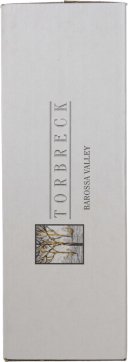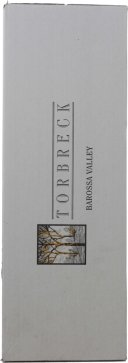M Chapoutier L'Ermite Ermitage
At the very top of the Appellation. Black fruits with spicy ink notes on the nose The palate- the tannins are very powerful but also mellow, smokey notes pepper, highlights wonderfully the Syrah variety on granite soils.
Bruno Giacosa Falletto Barolo
This wine was made in 2011 and 2012 but not in 2013. The 2014 Barolo Falletto (white label) is fascinating to taste right after the Barbaresco Riserva Asili from the same vintage. There is no doubting the extra muscle mass and power that is obtained in the Barolo appellation, and from the Serralunga dAlba township specifically. This dramatic Barolo delivers darkness and density. It shows a beautiful appearance with faint highlights of dark ruby that add a subtle sparkle. At this point in its drinking cycle, the wine shows all the characteristic traits of its youth. This means it is more closed and rigid at present. That nervous tightness needs to be factored in when assessing the cellar longevity of this vintage. Hints of the wines inner complexity, sheer determination and textural fortitude are already bubbling up from deep inside this firmly layered Nebbiolo. I wanted to mention the tightness of the tannins now. These will undoubtedly serve to carry this wine forward over the coming decades. *95 points*, The Wine Advocate Monica Larner
Torbreck The Laird
Every now and then, in life and in wine, we are presented with unique opportunities to express ourselves and create something truly remarkable. When these rare opportunities arise, we need to capture, nurture and develop them so that their potential is fulfilled. So when Torbreck were given the opportunity to work with one of the most famous vineyards in the Barossa Valley, they were determined to use all their experience to ensure the resulting Shiraz was truly remarkable.
Bass Phillip Reserve Pinot Noir
Australian Pinot Noir does not get any better than the wines produced by Phillip Jones at the iconic Bass Phillip winery. A Pinot Noir of utmoust power and elegance, the rival to any great Burgundy. Rated in the top classification in Langton's Classification of Australian Wine, Bass Phillip Pinot Noir is riddled with complex flavours of strawberry, violets, rose petal and forest floor. The length of palate is immortal.
Torbreck The Laird Shiraz
Torbrecks flagship wine, The Laird Shiraz is only produced in exceptional years. The fruit comes from one of the finest Shiraz sites in the Barossa valley; the dry grown Gnadenfrei vineyard dating from 1958. Matured for 36 months in special French barriques coopered by Dominique Laurent, the Laird is the ultimate expression of ultra-concentrated single vineyard Barossa Shiraz.
Tenuta San Guido Sassicaia
Based on Cabernet, Sassicaia is one of the first Italian reds to be made in the image of Bordeaux. In the late 1990s Sassicaia was granted its own DOC, the only wine from a single vineyard to enjoy this privilege.
Guigal La Mouline Côte Rôtie
Guigal are one of the cornerstones of the Côte Rôtie appellation after Etienne Guigal founded the estate in 1946, tending vines that have produced world class wines for over 2,000 years. The 2005 Côte Rôtie is a blend of 89% Syrah and 11% Viognier is a truly remarkable wine from vintage that was considered difficult by many. That is impossible to tell when enjoying a bottle of this 100 Robert Parker pointed Côte Rôtie that is voluptuous and complex. Still tightly wound and a little shy, the 2005 will age easily for 20+ years which should be considered mandatory.
Chateau Margaux 1er cru classe
Château Margaux is a 1er Cru Classé (first growth) estate of Bordeaux. The Grand Vin is renowned for its enthralling perfumed elegance, finesse and layered complexity. A Cabernet Sauvignon blend with a minor component of Merlot and a smattering of Cabernet Franc and Petit Verdot, fermentation occurs in oak vats followed by maturation in 100% new barrels for approximately 22 months. Since its acquisition in 1978 by the Mentzelopoulos family, the quality and international reputation of Château Margaux has soared to even greater heights.
Chateau Montrose 2me cru classe
Chateau Montrose is a second Grand Cru Classé estate in St-Estephe and is considered one of the leading wine properties of the appellation. Located in the eastern half of the appellation just 800 metres from the Gironde estuary, the propertys proximity to the water provides a unique micro-climate that protects the vines from frost. The Grand Vin is a blend of Cabernet Sauvignon, Merlot and Cabernet Franc, that appears very powerful and austere in its youth, with a backbone of firm tannins that provides exceptional longevity.
Chateau Mouton-Rothschild 1er cru classe
One of the very greatest estates of Bordeaux, Château Mouton Rothschild is in the commune of Pauillac in the Haut-Medoc, 50km north-west of the city of Bordeaux. Its Chateau wine or grand vin is among the worlds most highly-rated and expensive. Excluded from the highest rank (Premier Cru or First Growth) of the famous Bordeaux Classification of 1855, Mouton was finally promoted in 1973 after decades of lobbying by Baron Philippe de Rothschild, who ran the estate from 1922 until his death in 1988. Mouton was first in the region to bottle at the estate, rather than shipping its wine to merchants for bottling elsewhere. Since 1924 artists including Braque, Dali, Picasso, Henry Moore, Miro, Chagall, Kandinsky, Andy Warhol, Francis Bacon, David Hockney and Lucian Freud have been commissioned to produce label images. Mouton, uniquely among the First Growths, remains in the hands of the same family as it was at the time of the 1855 Classification. The vineyards are on slopes with gravel-based soils leading down to the Gironde estuary and total 75ha 80% Cabernet Sauvignon, 16% Merlot, 3% Cabernet Franc and 1% Petit Verdot. The Chateau wine is (unusually) fermented in large oak vats and then matured in new oak barrels for between 19 and 22 months. Total production of the grand vin is 20,000 dozen or less. There is a second wine, Le Petit Mouton, established in 1993. The grand vin is noted for its flamboyance exotic, powerful aromas of cassis, minerals, tobacco leaf and graphite, an opulent palate and impressive length of flavour.


































